The gas planets, the giants of the solar system, the jovian planets — call them what you will, these planets have fascinated mankind for centuries, and they’re still one of the more intriguing astronomical bodies out there.
Jovian literally means “Jupiter-like”, from “Jove” — another name for the Roman god Jupiter (called Zeus by the Greeks). They are primarily composed of gas or ice and are much larger than the Earth. They’re also much easier to detect than other planets — largely because they’re so big.
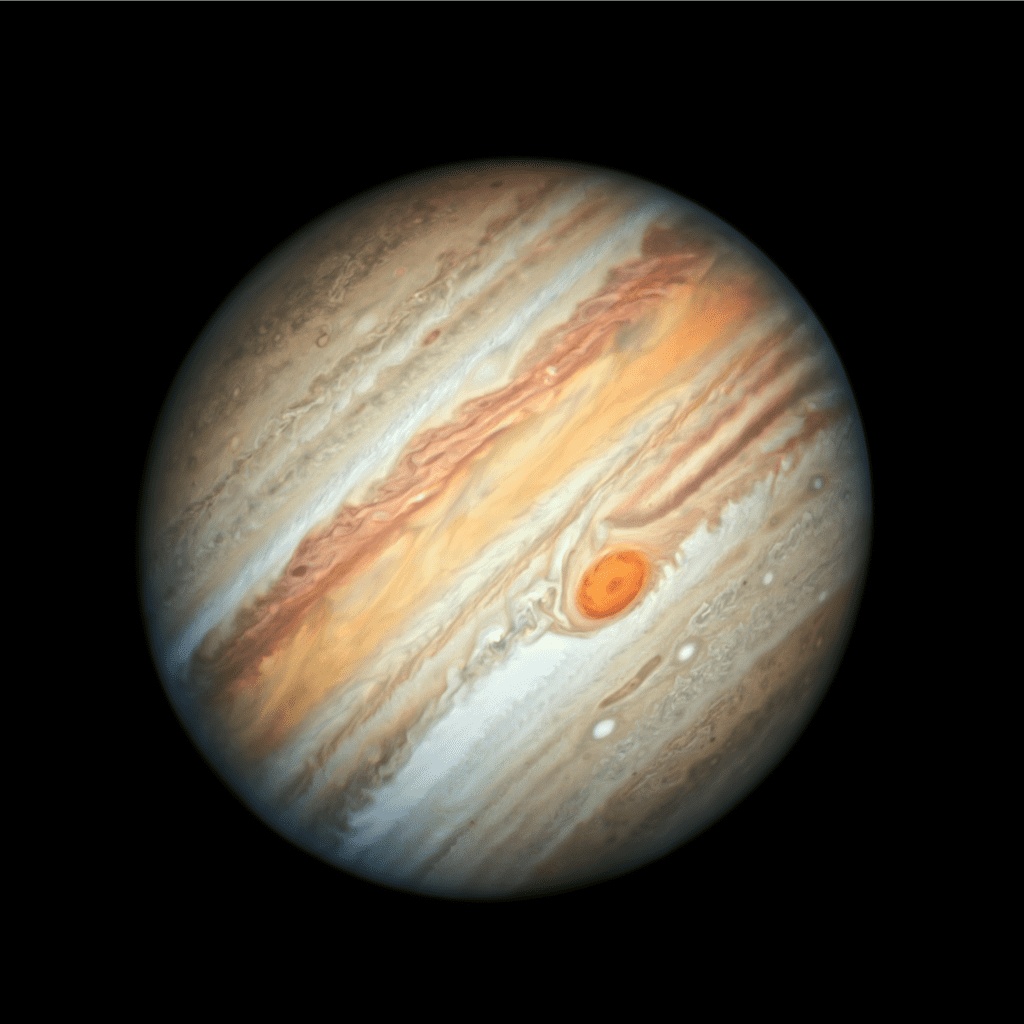
You can’t walk on a jovian planet
Jovian planets are comprised of fluid (gases or ices) rather than rock or other solid matter. Although giant rocky planets can exist, these are thought to be much rarer than gas or ice giants.
Jupiter is made up almost entirely of hydrogen and helium — the same elements found in the Sun, though at different temperatures and pressures. Here on Earth, hydrogen and helium are gases, but under the huge temperatures and pressures of Jupiter, hydrogen can be a liquid or even a kind of metal. We’re not entirely sure what lies at the center of Jupiter, but researchers believe that most likely, the core is similar to a thick, boiling-hot soup with a temperature of about 55,000 Fahrenheit (30,000 Celsius).
Saturn has a similar structure, with layers of metallic hydrogen, liquid hydrogen, and gaseous hydrogen, covered by a layer of visible clouds. Unlike Jupiter and Saturn, Uranus and Neptune have cores of rock and metal and different chemical compositions.
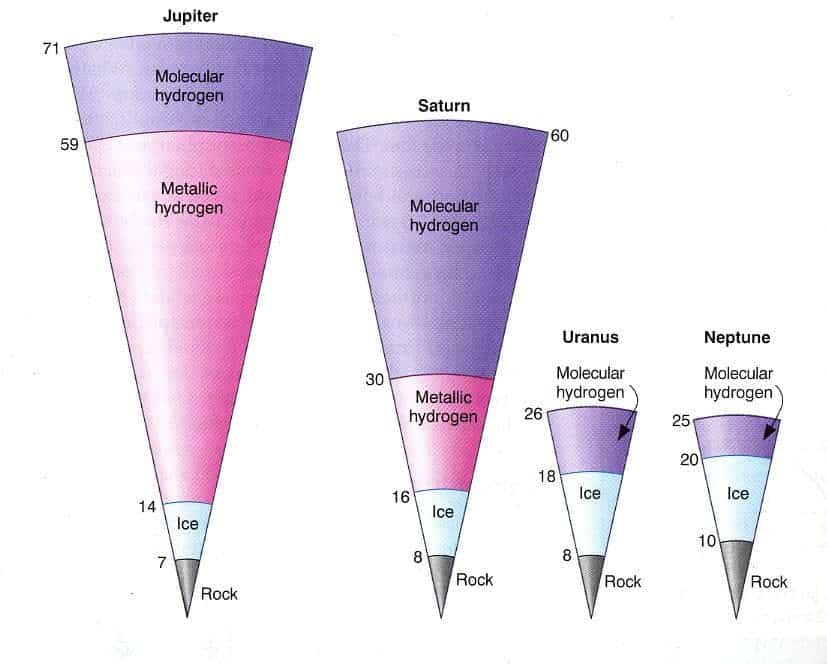
We’re not sure exactly what the surface of jovian planets is like, but based on all we know, it’s not something you can walk on. Jovian planets tend to have very thick clouds (the clouds on Jupiter, for instance, are 30 miles or 50 km thick). After that, there’s gaseous hydrogen and helium, then more and more condensed gas, until you ultimately end up in liquid, metallic hydrogen. Saturn has a similar structure, though it is far less massive than Jupiter.
You might even have trouble realizing where the atmosphere ends and where the “planet” begins.
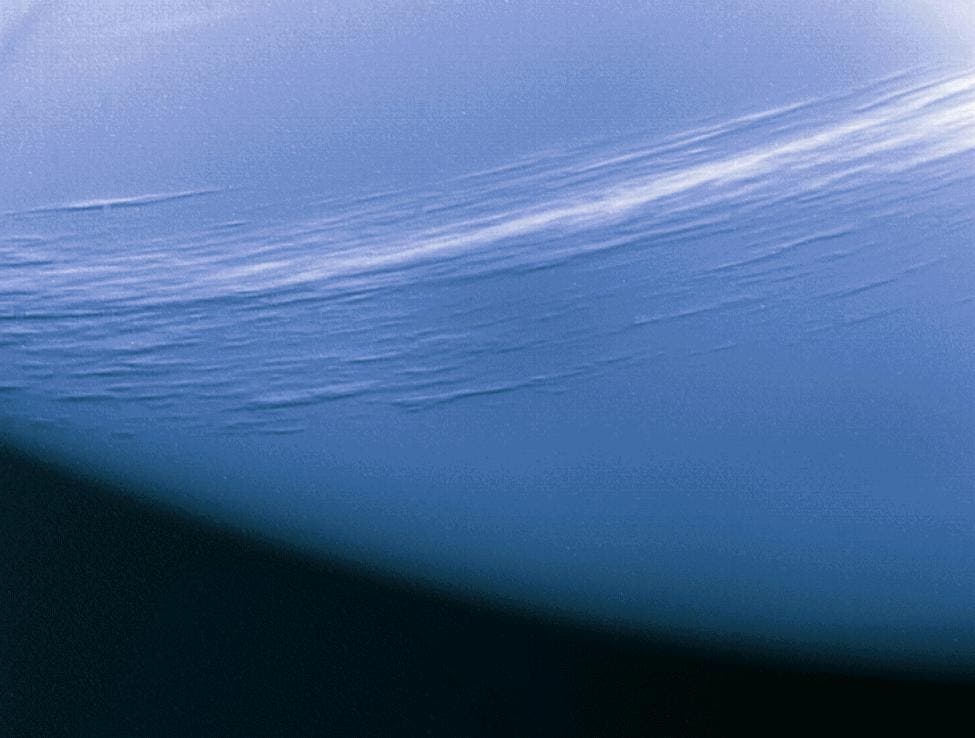
Uranus and Neptune, much smaller than both Jupiter and Saturn, have gaseous hydrogen surrounding a mantle of ice and a rocky core.
Jovian planets also have atmospheres with bands of circulating material. These bands typically encircle the planet parallel to the equator, with lighter bands lying at higher altitudes and being areas of higher pressure, and darker bands being lower in the atmosphere as low-pressure regions. This atmospheric circulation is similar only in principle to that on Earth, it has a very different structure.

There are also other, smaller visible structures. The most famous of these is Jupiter’s Great Red Spot, which is essentially a giant storm that has been active for centuries. Saturn’s hexagon is another very well-known feature — both of these are much larger than the Earth itself.
These spinning balls of gas and liquids are truly impressive, and we’re still learning new things about them.
Jovian planets in our solar system
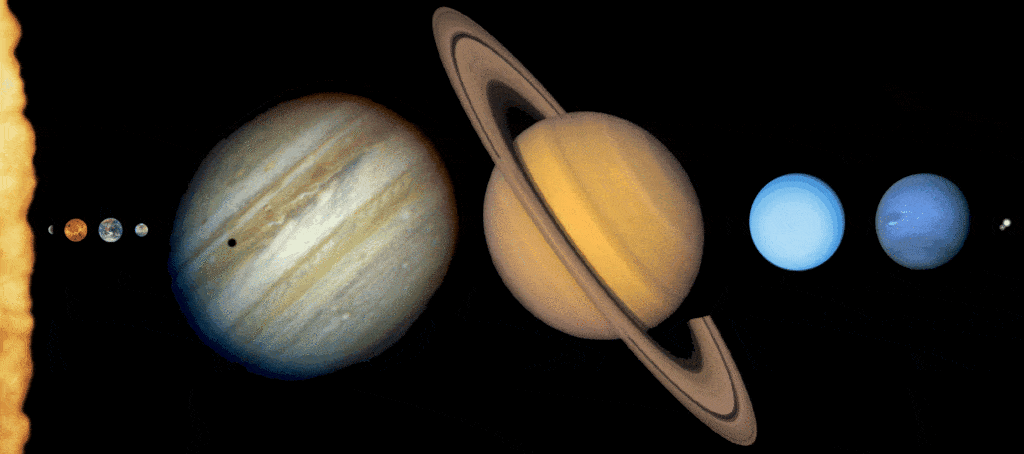
Not all gas planets are alike. In fact, the reason why some astronomers prefer the term jovian planets to gas giants is that not all jovian planets are made of gas.
For instance, just Jupiter and Saturn are true gas giants, whereas Uranus and Neptune are ice giants. However, even this is a bit misleading: at the temperature and pressures on these planets, distinct gas and liquid phases cease to exist. Even so, the chemistry of the two groups is different: hydrogen and helium dominate Jupiter and Saturn, whereas, in the case of Uranus and Neptune, it’s water, methane, and ammonia. The two latter planets are thought to have a slushie-like mantle that spans over half of the planet diameter.
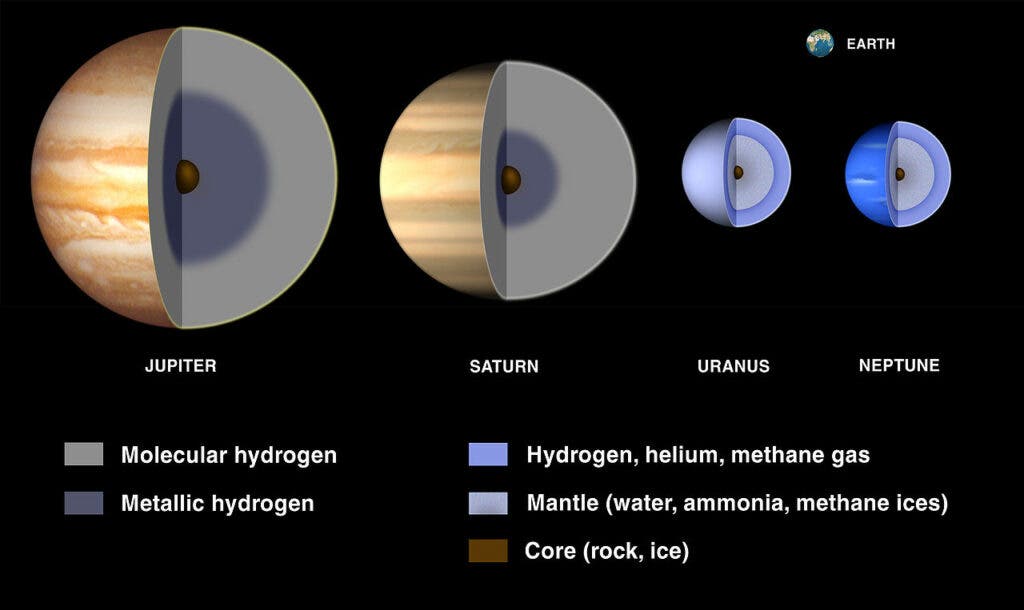
All four of these planets have large systems of satellites, and these satellites can be very interesting in their own right (we’ll get to that in a minute — there’s a good chance that life may be hiding in the jovian satellites). Saturn, for instance, has 82 designated satellites, and countless undesignated moonlets. Despite being larger, Jupiter “only” has 79 known satellites. Uranus has 27 and Neptune has 14.
All these four planets also have rings, though Saturn’s are by far the most pronounced.
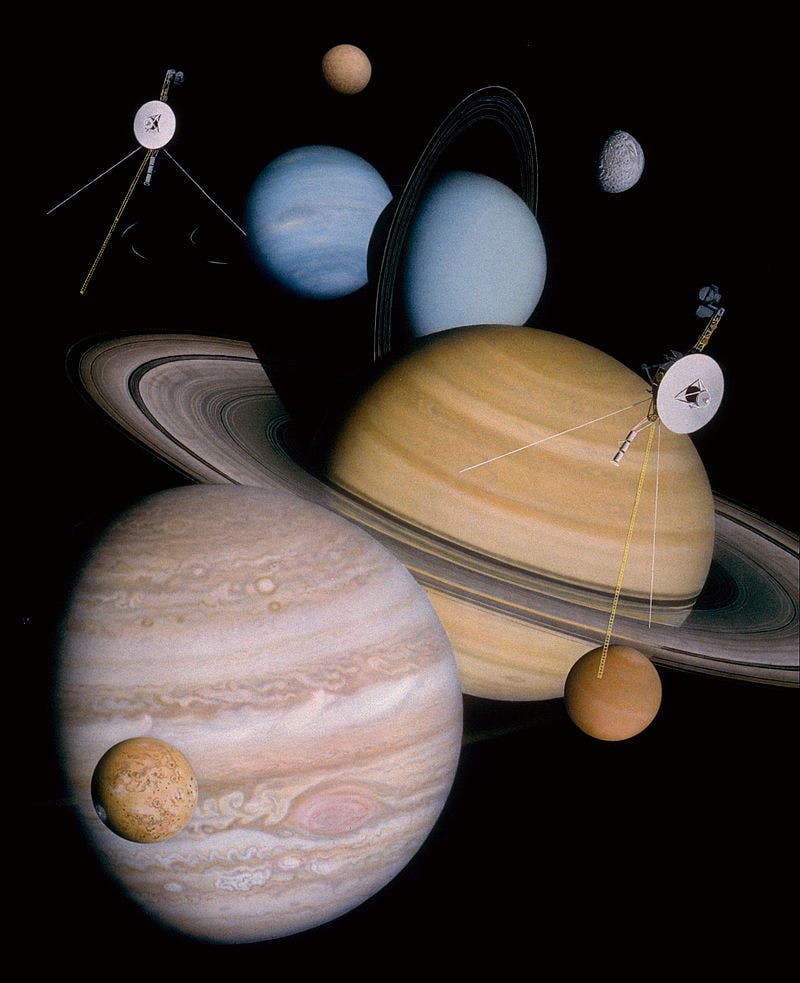
Much of what we know about gas and ice giants in general, we extrapolate from what we see in our own solar system. This being said, astronomers are aware that jovian planets can be very different and have a much greater variety than we see in our solar system.
Extrasolar Jovian planets
Roughly speaking, jovian planets can be split into 4 categories:
- gas giants (like Jupiter and Saturn) — mostly consisting of hydrogen and helium, and only 3-13% heavier elements;
- ice giants (like Neptune and Uranus) — a hydrogen-rich atmosphere covering an icy layer of water;
- massive solid planets (somewhat similar to the Earth, but huge) — tangible evidence for this type of planet only emerged in 2014, and these planets are still poorly understood. Astronomers suspect that solid planets up to thousands of Earth masses may be able to form, but only around massive stars;
- super puffs — planets comparable in size with Jupiter, but in mass with the Earth. These planets are super rarefied, and were only discovered in the past decade; the most extreme examples known are the three planets around Kepler-51.
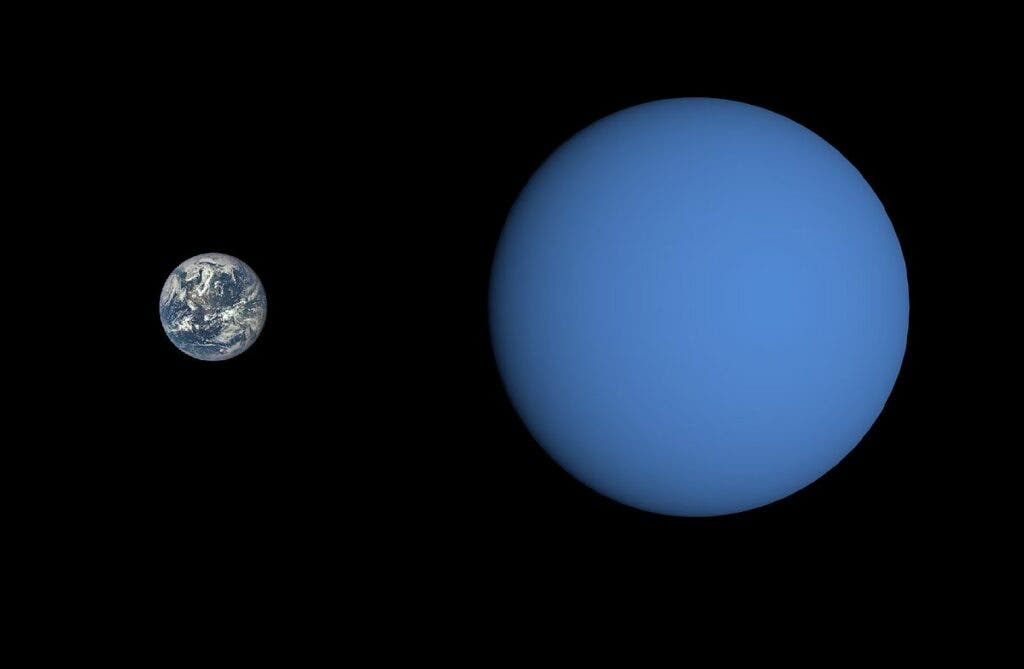
Based on what we’ve seen so far, jovian planets seem pretty common across our galaxy. However, we’ve only started discovering exoplanets very recently, and it’s hard to say whether the planets we’ve found so far are representative of the larger picture.
However, based on the fact that researchers have discovered far more Neptune-sized planets than Jupiter-sized planets (although the latter are easier to discover), it’s pretty safe to say that it’s the Neptune-sized planets that are more common.
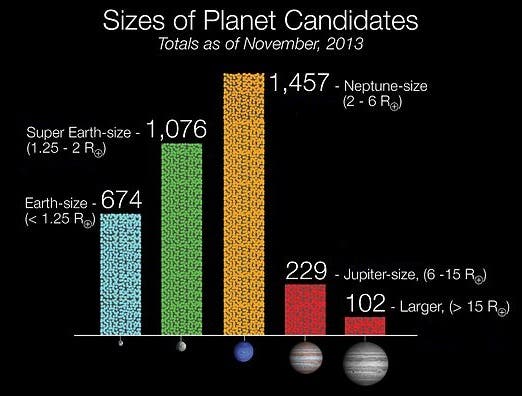
A particularly interesting class of jovian planets is the so-called Hot Jupiters.
Hot Jupiters are the easiest planets to detect. As the name implies, they are Jupiter-sized planets, but they lie very close to their stars and have a rapid orbital period that produces effects that are more easily detected. For instance, one such planet revolved around its star in only 18 hours, making for one very short year. Another freakish example of a Hot Jupiter is believed to have surface temperatures of 4,300°C (7,800°F) — which is hotter than some stars we know.
Extrasolar planets, and Hot Jupiters in particular, can shed a lot of light on the evolution of solar systems. It is believed that these planets form in the outer parts of solar systems (like Jupiter), but they slowly migrate towards the star, drawn by gravitational attraction. As they do so, they could wreak havoc on the entire solar system, much like a big billiards ball.
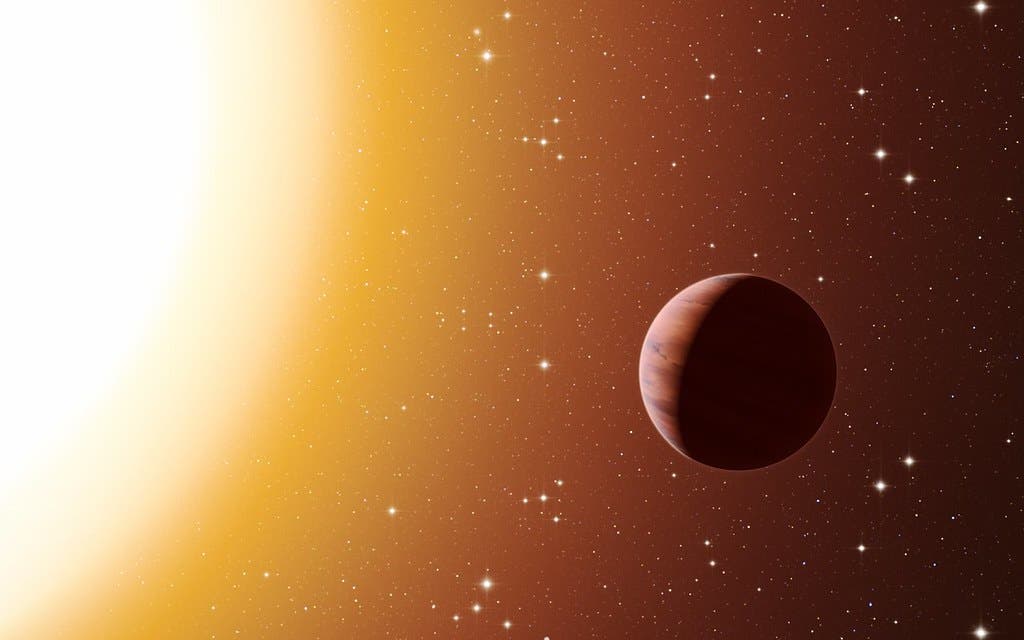
Some jovian planets get so large that they blur the line between a planet and a brown dwarf. Brown dwarfs are neither truly stars nor planets. As a rule of thumb, jovian planets are only “planets” until they are 15 times the mass of Jupiter — after that, they “become” brown dwarfs.
Because of the limited techniques currently available to detect and study exoplanets, there are still many things we don’t know about exoplanets, even those as big as Jupiter. We tend to associate these planets by size with the ones in our own solar system, piecing together other available information (which is scarce). As our telescopes, equipment, and theoretical models become better, we will no doubt better our understanding of jovian planets, and exoplanets in general.
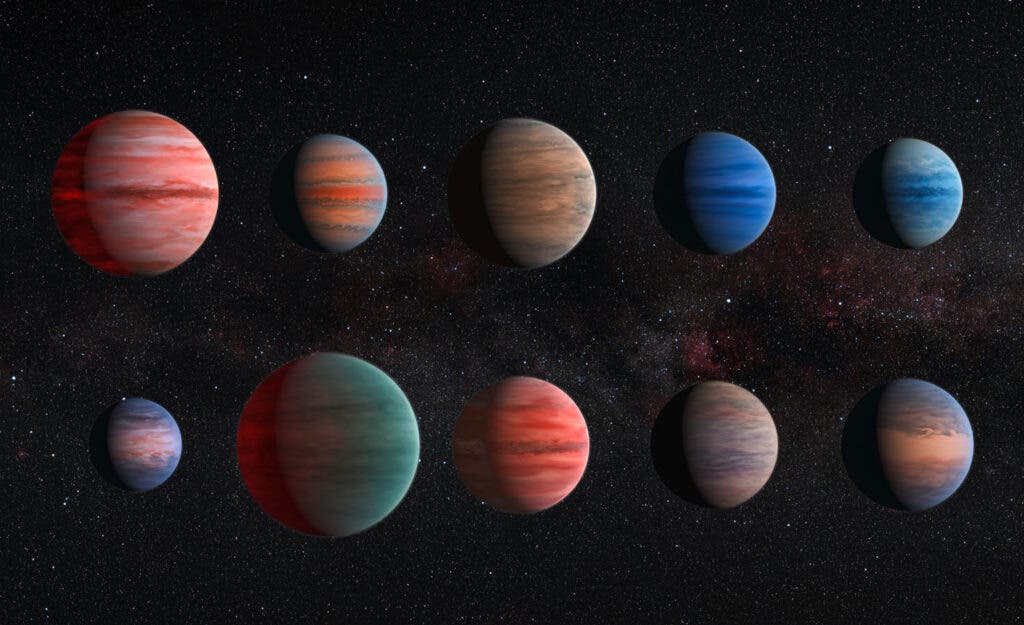
Life around Jovian planets
Jovian planets are not exactly life-friendly — at least not directly. A giant, spinning, mass of fluid you can’t even stand on, either very hot or very cold, doesn’t sound very attractive to life forms. But jovian satellites are a different story. In fact, astronomers are starting to believe that the satellites of Jupiter and Saturn may be the best places to look for extraterrestrial life in our solar system.
Both Jupiter and Saturn lie rather far from the Sun. They are cold, frigid places, as are their satellites — at least on the surface.
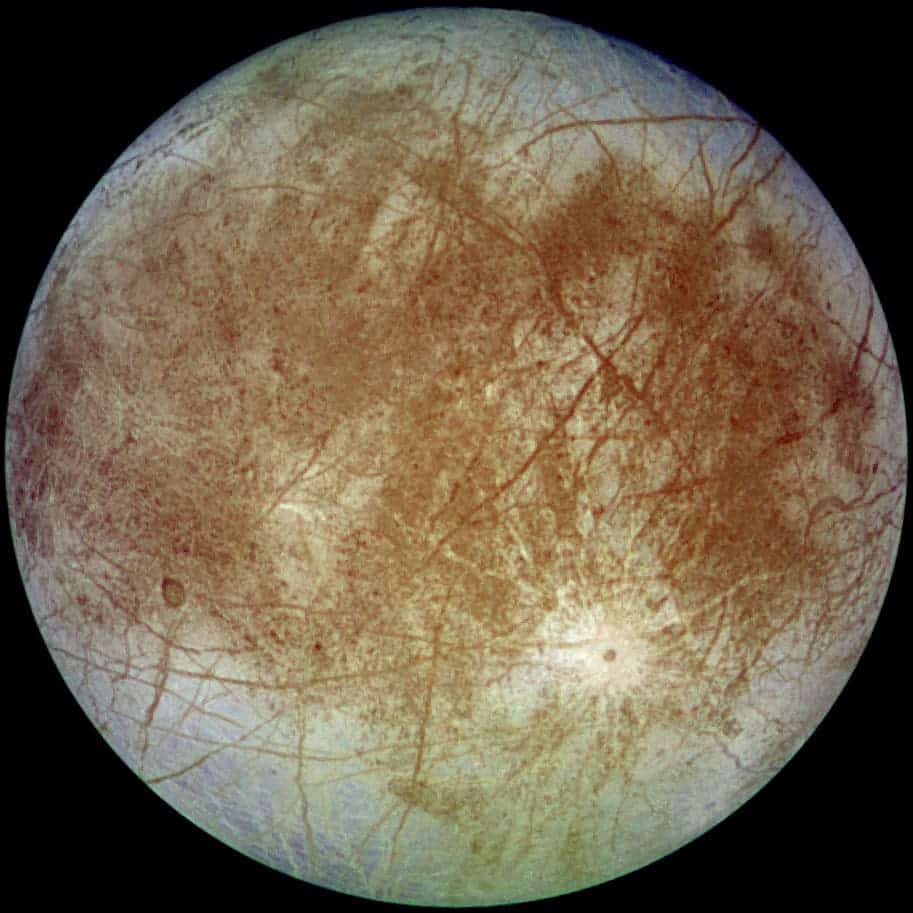
Researchers now believe that some of the icy satellites of Jupiter and Saturn (especially Europa and Enceladus) could host life under their frozen surfaces.
Although the surface temperatures are extremely low on these satellites, astronomers have some clues that both satellites may harbor oceans of liquid water beneath the frozen surface. Basically, the huge gravitational effect from their host planets causes friction and shear in the ice, which produces sufficient heat to melt the ice. This is called tidal heating. Geothermal and geological activity may also contribute to this effect, creating a liquid, salty water beneath the ice — and while this has not yet been confirmed, these could be suitable conditions for life to emerge.
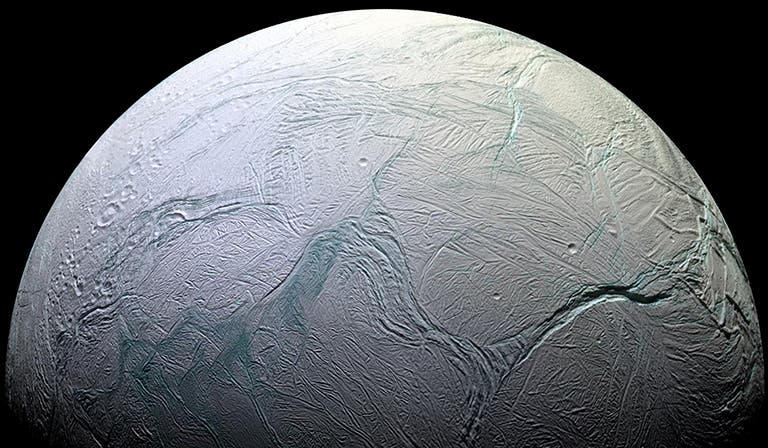
In addition to Europa and Enceladus, several other jovian satellites could harbor life (with various degrees of likelihood): Callisto, Ganymede, Io, Triton, Dione, and even Pluto’s moon Charon could all have a liquid ocean compatible with life. NASA’s Clipper mission is set for launch in 2024, with the goal of exploring Europa’s potential habitability. Some scientists believe there are as many habitable exomoons as there are habitable exoplanets.
Jovian planets seem to play a key role in the structure of solar systems. Whether their satellites can hold life or not, they are an extremely important puzzle piece in our understanding of how solar systems form, evolve, and how the Earth fits in this grand cosmic puzzle.


